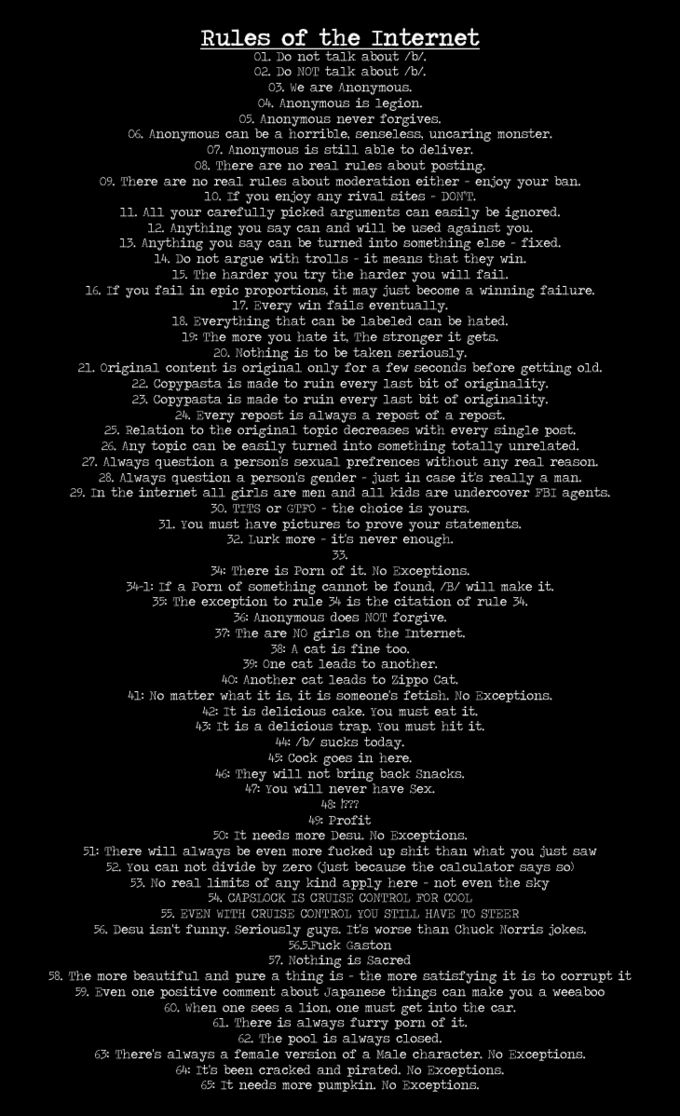Upon reading these chapters, a strange revelation fell upon me. Most of the legal references and social assumptions of these chapters are based onU.S.law and society. From my understanding, the internet is a “world wide” tool that has been used for everything under the sun and beyond (see internet rule 34). Because of this, it is hard for me to believe that any one nation can control, limit, or regulate in any way all actions on the internet. This is because there is always a “back door”. No one thing connected to the internet has been safe from all hacks and viruses. Nothing is sacred and nothing can be if it is on the internet. This includes users. No one (and I mean not one person) is safe from all the content on the internet. So what should you do? Teach your children about safe usage of this tool. Like anything (the stove, a gun, or a knife) proper training is the key to safe usage. So treat the internet like the outlet and don’t let your kids stick forks in it.
As for Chapter 8, it doesn’t matter the tool used to communicate but what people are communicating about. The First amendment protects your right to have an opinion but does not protect your right to express it freely. That has been the problem right from the start and has been the gap law makers have used to regulate here in theU.S.Because of this, it is important to understand that there are rule to everything and you need to know them. These rules should not be made into law because then people fight it just because it is a law. Look at comic books and the Comics Code Authority.
